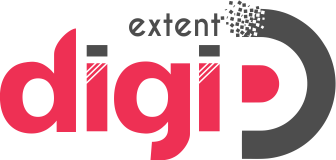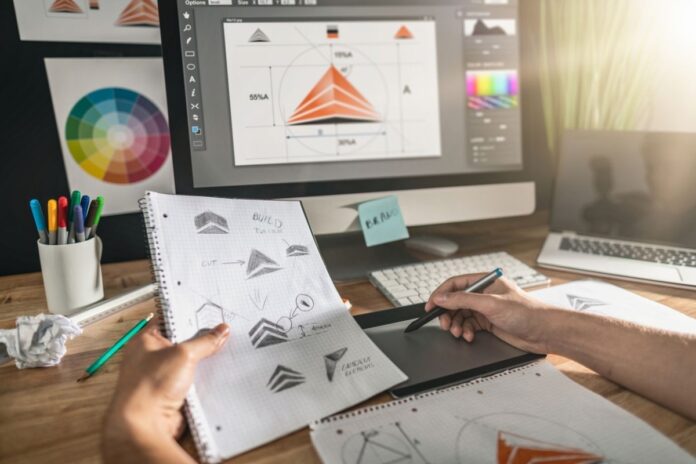Nowadays, designing with the software on the computer is the only way most designers approach their craft. It’s so ingrained in us that we might wonder how it was ever done any other way! But there’s good reason to look back at how graphic design was done before computers became mainstream namely, some of the techniques and styles that existed before digital imaging may inspire you to try something new in your own work.
In this article, we’ll explore some of the older ways graphic design was done and see what insights we can draw from them into our own practices today!
What Were the Alternatives to Photoshop In The 90s?
In the 90s, there were a few different graphic design software programs that were popular among designers. Some of these included Adobe Illustrator, FreeHand, and QuarkXPress. These programs were used to create vector illustrations, type treatments, and page layouts.
Today, Photoshop is the most widely used graphic design software program. However, in the 90s, it was not as widely used as it is today.
Other popular graphic design software programs included Adobe Illustrator, FreeHand, and QuarkXPress. All three of these programs could be used to create vector illustrations, type treatments, and page layouts.
What Were the Alternatives to Illustrator In The 90s?
If you were a graphic designer in the 1990s, chances are you used Adobe Illustrator for your vector illustrations. But what were the alternatives to Illustrator in the 90s? Let’s take a look.
CorelDraw was one of the most popular programs for creating bitmap graphics and page layouts before Photoshop came along. It was part of CorelDRAW Graphics Suite, which also included Corel Ventura and Corel Photo-Paint. The suite was often called The Graphics Power Tool. Other alternatives at the time included Macromedia Freehand and Fontographer from Bitstream.
What Are Some Other Alternatives to Photoshop And Illustrator Today?
If you’re interested in pursuing graphic design but don’t want to use Photoshop or Illustrator, there are plenty of other options available. For vector illustrations, Inkscape and Affinity Designer are both great alternatives to Illustrator. For photo editing, GIMP is a popular free program that has many of the same features as Photoshop. And for web design, there are numerous web-based tools available that can help you create professional-looking websites without any coding knowledge.
So, whatever your graphic design needs may be, there’s sure to be a program out there that’s perfect for you.
Which Alternative Is for Me – Graphic Designer Or Student?
If you’re considering a career in graphic design, you may be wondering if it’s the right field for you. With so many different types of designers out there, it can be hard to know where you fit in. Do you want to be a traditional graphic designer, working with pencil and paper? Or do you want to use the latest software to create digital designs? Maybe you’re not sure yet and are still exploring your options.
Traditional graphic designers draw on paper or create layouts using hand-drawn typefaces, whereas digital designers work with computer programs like Adobe Photoshop or InDesign.
In general, most new graduates go into digital design because the tools have become more accessible; however, some schools offer degrees in traditional graphic design as well.
Traditional graphics designers tend to work in an office environment while their younger counterparts may be freelancers working from home or other remote locations.
Which Alternative Is for Me – A Freelancer Or Creative Director?
When it comes to choosing a graphic design career path, there are pros and cons to both freelancing and working as a creative director.
If you’re trying to decide which route is right for you, consider the following factors:
- Are you self-motivated or do you need someone to give you structure?
- Do you prefer working on a team or independently?
- Do you want more creative freedom or stability?
- Do you want to be your own boss or have the potential to earn a higher salary?
- Do you prefer working with clients directly or indirectly through an agency?
- Are you willing to sacrifice some benefits for more control over your work/life balance? -Would you rather take the lead or follow behind others?
- Is this just a side gig for you or will this be your main source of income?
- What do you find most rewarding about designing, and how does that align with what kind of position would suit you best?
Freelance vs. Full-Time
As you can see, freelance and full-time positions each have their own benefits and drawbacks. But if you choose to freelance, that doesn’t mean you’ll only be working part-time!
In fact, freelancers often work more hours than those who work full-time with an agency or company. As a freelancer, you may find yourself juggling multiple clients and projects at once – and keeping up with your social life may become secondary to your career aspirations!
You could even discover that there are other elements of running a business that isn’t quite as simple as just getting paid to design, such as client management, marketing, and accounting.
Which Alternative Is for Me – Designer or Marketer/Advertiser?
As a graphic designer, you have to be creative and come up with innovative ideas that will set you apart from the competition. You also need to be able to work well under pressure and meet deadlines.
If you’re more interested in the business side of things, then a career in marketing or advertising might be a better fit for you. In this field, you’ll need to be good at problem-solving and have excellent communication skills.
Conclusion
In conclusion, there is no one answer to the question of how graphic design was done before computers. Depending on the time period and geographical location, different methods may have been used. However, some common techniques included hand-drawn lettering and illustrations, woodblock printing, and lithography. While computer-aided design has made the graphic design more accessible and efficient, it is important to remember the rich history of the field.


